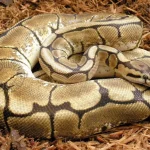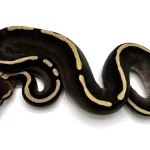Thinking about getting a pet snake? Baby Corn Snakes are the perfect choice! These little corn snakes are known for their beautiful colours, calm nature, and easy care.
Whether it’s your first snake or you’ve had pet snakes before, you’ll love a baby corn snake.
In this article, you’ll learn all the secrets to keeping your new scaly friend happy and healthy. Let’s get started and find out all about these amazing little snakes!
What is a Baby Corn Snake?
A Corn snake baby is simply a newly hatched corn snake. These snakes belong to “Pantherophis guttatus” species. These are clear-led snakes due to their the-like pattern on their belly scales.
Appearance
Baby corn snakes are very cute and small. The length of a baby corn snake is about 8 to 12 inches. They have smooth and shiny scales, which make them most attractive. The colour of baby corn snakes varies in the growing phase.
Firstly, they are fresh orange and red, turning grey and white. They also have black-bordered patches along their back.

Behaviour
Generally, baby corn snakes have a very friendly, calm and shy nature. Being crepuscular animals, they are active during the night and evening.
Housing and Enclosure
Providing a suitable environment for baby corn snakes is very important for their health. The tank size will be 10 gallons, but they require more space as they grow.
Must use a secure lid, which prevents their escape. It would help if you used a safe and easy-to-clean substrate.
You should use Aspen shavings, paper towels, and reptile carpet; It’s a good option. Shadings of pine or cedar should be avoided as they may be poisonous to snakes.
Hide boxes for snakes
To feel secure, baby corn snakes need places to hide themselves. To comfort your baby snake, you should provide at least two hiding spots, one warm and the other cold.
For this purpose, you can use commercially available hide boxes, small cardboard boxes, or even clay pots.
Temperature And Humidity
Maintaining proper temperature is very important for baby corn’s health. The warm side should be around 85°F (29°C), while the cool side should be around 75°F (24°C).
Always monitor the tank’s temperature; it’s very important for their health. An under-tank heater or a heat lamp is also available to maintain temperature.

Maintain humidity levels between 40% and 50%. Provide a shallow water dish large enough for the snake to soak in, and mist the enclosure occasionally if needed.
Diet And Feeding
Feeding a baby corn snake the right diet is very important for its growth and health.
What Do Baby Corn Snakes Eat?
Baby corn snakes are carnivorous and eat small rodents. In captivity, they usually eat pinky and fuzzy mice, newborn mice.
They can be fed larger prey as they grow. You should feed baby corn snakes every five to seven days.
As they grow, you can gradually increase the size of the prey and adjust the feeding frequency to every 7 to 10 days.

Read Also:
Handling and Socializing
Handling a baby corn snake needs to be done gently and carefully. When you first start, keep the handling sessions short, around 5-10 minutes. This helps the snake get used to you without feeling stressed.
Always make sure to support the snake’s body with your hands. Be gentle and avoid sudden movements, as these can scare the snake.
As the snake becomes more comfortable with you, you can gradually increase the handling time.
Regular and gentle handling helps the baby corn snake get used to being around people. This makes the snake more relaxed and enjoyable, making it a great pet.
Also, Read Know about Albino Corn Snake.
FAQ’s
How To Care Baby Corn Snake?
Baby corn snakes can sometimes have health problems like breathing, mites, and trouble shedding skin. To keep your snake healthy, regular visits to the vet.
As we mentioned above, ensure your snake eats well, lives in a clean space, and has the right temperature and humidity.
A healthy baby corn snake will have clear eyes and smooth and shiny scales and will shed its skin regularly. By taking good care of your snake, your snake cannot face any health issues.
Are Baby Corn Snake Dangerous?
Baby Corn snakes are not dangerous. They are non-venomous and gentle, making them safe to handle and keep as pets.
Corn snakes are more likely to hide or run away if they feel threatened rather than bite. They are friendly and are often recommended for beginners who want to own a pet snake.
Do baby corn snakes need UVB lighting?
No, baby corn snakes do not need UVB lighting. They can be healthy and happy without it if they have a warm spot in their enclosure to regulate their body temperature.
Regular lighting during the day and a dark period at night are enough for them.

Are baby corn snakes the same as baby rat snakes?
Baby corn snakes and baby rat snakes are similar but not the same.
They belong to the same family and share some characteristics, but corn snakes have unique colours and patterns that make them different from other rat snakes.
Can baby corn snakes not coexist with other snakes?
Baby corn snakes might not get along well with other snakes. It’s best to keep them alone because they can be territorial or stressed by the presence of other snakes.
Putting them together can lead to fights or health problems. It’s safer and more comfortable for your baby corn snake to have its own space.
What is the cost of baby corn snakes?
The cost of baby corn snakes can vary depending on their colour and pattern. On average, they usually cost between $30 and $100. Some rare or special types might be more expensive.
Do baby corn snakes bite?
Baby corn snakes can bite, but it’s rare and usually happens if they feel scared or threatened. Their bites are not dangerous or evil but are generally gentle and friendly.
Conclusion
Baby corn snakes are great pets. They are friendly, colourful, and easy to care for, which makes them perfect for beginners.
They will stay healthy and happy by giving them a good home, feeding them well, and taking them to the vet.
Handle them gently and give them their own space. This helps them grow into good and fun pets. Baby corn snakes can bring joy and be wonderful friends for many years with the right care.






